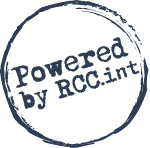Situation of women in labour markets of the Western Balkan economies is characterised by low rates of activity, low employment, and high unemployment, especially for youth.
More than a half of productive potential of women aged 15-64 remained untapped in the Western Balkans during 2018-2020.
Women employment rates in the Western Balkans are consistently below those of the EU-27. In 2020 women in employment were on average more educated than men.
Shares of women in self-employment vary from one WB economy to the other, while informal employment and gender pay gaps remain persistent in all economies.
Boosting women’s participation in labour markets in the Western Balkans would boost the growth potential by increasing Gross Domestic Product (GDP) by 20% (World Bank, 2018), and 5% of this increase would be due to the higher participation of women in entrepreneurship activities.
According to the RCC Gender Equality and Women Empowerment (GEWE) Study (2021), Western Balkan economies could raise their GDP per capita by 1.5% by 2035 if they undertake rapid action compared to the current situation to reduce the gender gap in participation rates. Closing gender gap in participation rates and gender pay gaps is important for equality reasons and both lead to economic stimulus.
Increasing women’s access to economic opportunities needs to be a key objective in the Western Balkans.

More than half of the productive potential of women aged 15-64 in the Western Balkan economies during 2018 – 2020 remained untapped
Women employment rates in the Western Balkans are consistently below those of the EU-27

Both female and male unemployment in the Western Balkans is high, but the gender gap in unemployment rates is relatively low. There are no clear trends in closing the gender gaps in unemployment rates in the region, while the range of the gaps varies across WB economies.



Although informality is persistent across Western economies and women are affected, data on informality in the labour markets for the region are limited , and gender-disaggregated indicators are often missing.

What share of working-age women are active in labour markets in the Western Balkans?
- a) 73.2%
- b) 49.6%
- c) 34.5%
How big is the gender-gap between employed women and men in the Western Balkans?
- a) Less than 10 percentage points
- b) 15 percentage point
- c) Over 15 percentage point
Between employed men and women (25+) in the Western Balkans who is more educated?
- a) Men
- b) Women
How big is the share of part-time employment in women’s employment in the Western Balkans?
- a) 50%
- b) 10%
- c) 20%
What is the unemployment rate of women (15-64) in the Western Balkans?
- a) 18.1%
- b) 31.1%
- c) Less than 10%
Not in Education, Employment or Training - NEET rate for female youth in the Western Balkans is:
- a) substantially higher than for male youth
- b) substantially lower than for male youth
- c) approximately the same


